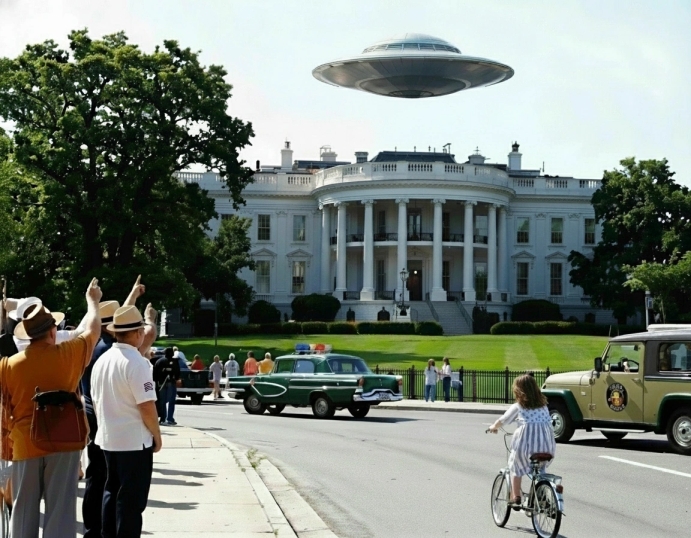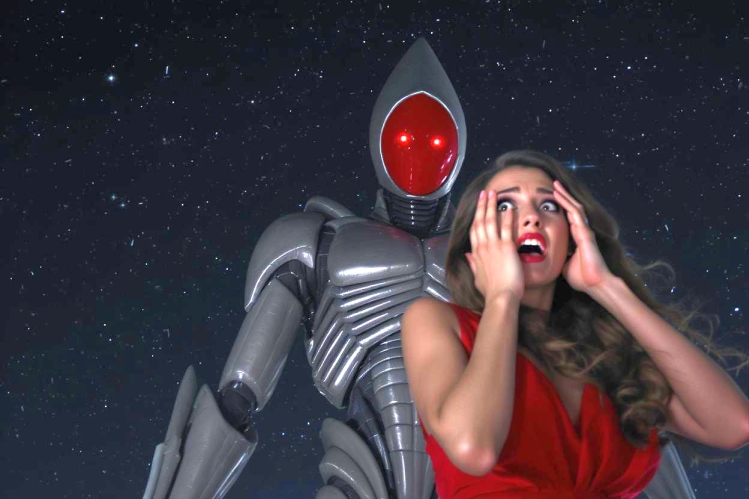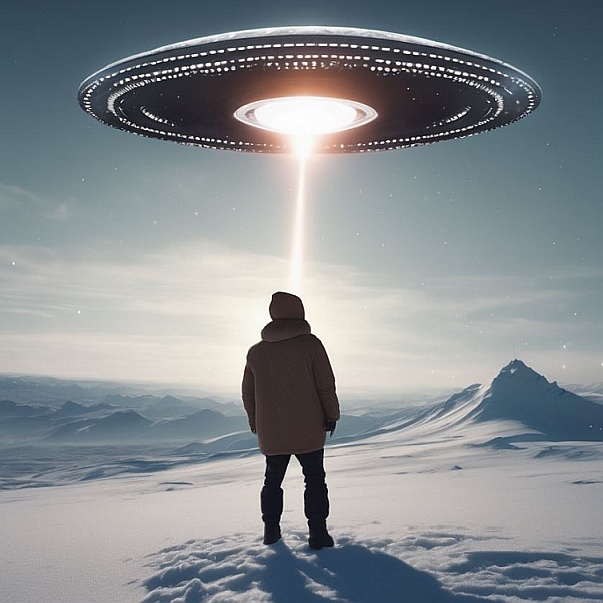One of the most famous and puzzling UFO incidents of the early Cold War era took place over the quiet college town of Lubbock, Texas, in late summer 1951. Known as the Lubbock Lights, this mysterious series of sightings became one of the first major cases investigated by the U.S. Air Force under Project Blue Book, and it remains a defining event in American UFO history.
The First Sightings
On the night of August 25, 1951, three professors from Texas Technological College (now Texas Tech University)—Dr. W. I. Robinson, Dr. A. G. Oberg, and Dr. W. L. Ducker—were sitting in one of their backyards discussing meteor activity when they suddenly witnessed something extraordinary. Overhead, a formation of 15 to 30 bright bluish-green lights, sightly fluorescent in color, silently flew across the sky in a perfect semi-circular pattern. The lights were reported to be as bright as stars but larger than stars.
The lights were fast, silent, and orderly—far too organized to be meteors, birds, or random reflections. The lights were absolutely circular in shape. The professors observed one formation of the lights flying above a thin cloud at about 2,000 feet (610 meters) that allowed these scientists to calculate that the lights were traveling at over 600 miles per hour (970 kilometers per hour). Over the next few nights, the professors and dozens of other Lubbock residents reported similar glowing formations passing overhead. Word spread quickly through the small Texas city, sparking both fascination and fear.
The Photographic Evidence
The case took a new turn when a Texas Tech freshman, Carl Hart Jr., managed to photograph the strange lights on August 30, 1951. Using a Kodak 35mm camera, Hart captured five photographs showing distinct rows of luminous dots flying across the night sky.
His photos were published nationwide, including in Life magazine, and became some of the most famous UFO images of the 1950s. Even skeptics were intrigued by the symmetry and clarity of the formation, and the Air Force quickly took interest.
The Air Force Investigation
The U.S. Air Force dispatched investigators under Project Blue Book, led by Captain Edward J. Ruppelt, to interview witnesses and analyze the photographs. The professors’ credibility lent the case serious scientific attention, as they were trained observers familiar with atmospheric and astronomical phenomena.
Initially, the Air Force could not identify the lights. The formations seemed to fly too fast for known aircraft of the era, and their shape and color didn’t match any known natural phenomenon. Eventually, however, the Air Force proposed a possible explanation: the lights might have been reflections from the underside of night-flying plover birds, illuminated by newly installed streetlights around Lubbock.
Yet this explanation failed to convince the professors or many other witnesses. The lights were described as too bright, too synchronized, and moving too uniformly to be birds.
Alternative Theories
Over the years, numerous theories have been proposed to explain the Lubbock Lights:
-
Migratory bird reflections – The Air Force’s official stance, though disputed by locals and scientists.
-
Secret military aircraft – Some have speculated the lights were test flights of experimental planes, though no documentation has surfaced.
-
Atmospheric or electrical phenomena – Similar to ball lightning or ionized air patterns, though such events usually appear differently.
-
Extraterrestrial visitors – UFO enthusiasts cite the intelligence and precision of the formation as evidence of a controlled craft.
None of these theories have fully satisfied all eyewitness descriptions or the photographic evidence. But, the extraterestrial visitors theory remains the most popular.
Why People Linked It to Aliens
-
Unexplained Aerial Behavior
Witnesses reported that the lights moved in complete silence, at great speed, and in perfect formation—far beyond the flight capabilities of conventional aircraft in 1951. Jet technology was still new, and the idea of multiple objects maintaining such precise coordination without sound seemed extraordinary. To many, this implied an intelligent control—possibly from beyond Earth. -
Credible Witnesses
The involvement of college professors and scientists lent credibility to the sightings. These were not casual observers but trained academics who insisted that what they saw could not be explained by ordinary phenomena. Their reputations and technical knowledge helped convince many that something genuinely mysterious had occurred. -
The Postwar UFO Craze
The Lubbock Lights came only a few years after the 1947 Roswell incident and the Kenneth Arnold “flying saucer” sighting—both of which had already stirred public fascination with UFOs and aliens. In that cultural atmosphere, reports of strange lights in the Texas sky naturally led people to think of extraterrestrial spacecraft rather than mundane explanations. -
Government Secrecy and Project Blue Book
The U.S. Air Force investigated the Lubbock Lights under Project Blue Book, its official UFO research program. Though the Air Force eventually suggested that the lights might have been flocks of birds reflecting streetlights, many found that explanation unsatisfactory. The idea that the government was downplaying or concealing the true nature of the sightings only fueled public belief that the lights were of alien origin. -
Consistent Patterns of Sightings
Around the same time, similar lights were reported across other parts of the American Southwest. The consistency of descriptions—fast-moving, luminous, silent formations—led some researchers and UFO enthusiasts to speculate that these were part of a coordinated observation or reconnaissance by extraterrestrial visitors.
Legacy and Cultural Impact
The Lubbock Lights incident became one of the cornerstone cases in early UFO research and helped fuel the 1950s UFO craze in the United States. It was featured in countless documentaries, books, and UFO studies, and it played a role in shaping public perception of unidentified flying objects as structured, technological, and possibly extraterrestrial.
Even Captain Ruppelt, after leaving Project Blue Book, admitted that the Lubbock Lights were “one of the few UFO reports that defied a completely satisfactory explanation.” (In another words, they could not be de-bunked.)
Conclusion
More than seven decades later, the Lubbock Lights of 1951 remain an unsolved mystery. Whether a person considers the occurrence as a natural anomaly, a secret government project; yet both theories have been now basically de-bunked, or something far stranger, most especially extraterrestrial- the event stands as a compelling moment when respected scientists, civilians, and photographers all witnessed something far beyond a conventional explanation— it is a glowing reminder of how vast and mysterious the night sky can be, and the very real possibility of extra intelligent life in the universe.


